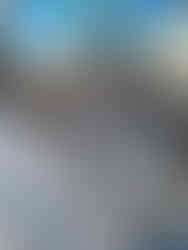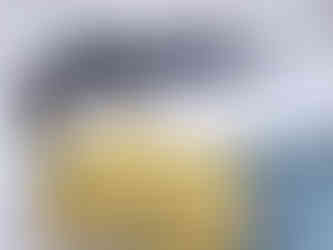Rusty Rustic Rover
- Belinda

- Feb 25, 2021
- 7 min read
Updated: Mar 14, 2023
I am so thrilled to present my second Faith Pocock Design Studio project for February - a project I began working on part way through January believing that I had an ample amount of time to work on it. And I did, but I used every moment I could and wish I still had more. I could tinker for a long time yet (and may just do so), but it actually is complete and I LOVE it. I am passionately enthusiastic about this model and hope that you can see my passion in the work I've done and are inspired to give it a go yourself.
This blog is going to be a little different to my normal - expect loads of pictures. The Rover comes with assembly instructions, which is an ample explanation of the building process. For this blog I am going to concentrate my explanations around the creation of the aged/grunge effects. I employed some techniques with some subtle differences to create a delicious old and forgotten look. A nod to steampunk style, a large dose of rustic and rusty, some "mud" and more.
As per usual I started with a dry run .... Er...make that: I attempted a dry run. As much as I thoroughly recommend a dry run on these kits, I found it impossible this time around, even when trying some trickiness... FAIL!
The effects created were all achieved using a similar process of layering. Varying the colours and method of application are sufficient to achieve totally different effects, but a cohesive look.
The first distressed look was employed on the floor pieces. I'll talk about the plain grey side further on. For the underside of the floor I used a green-grey base and added randomly placed layers of oilskin brown, chocolate brown, black, and orange, again applied with a damp cloth. Now this could be considered a little overkill, as the underside of these pieces will only ever be seen if you turn the vehicle upside down and look. But it made me extremely happy to cover every exposed surface and do what I consider a 'proper' job.
The second aged effect I employed was my favourite of all in terms of both the process and results. A rusty metal look applied on any areas I thought would realistically be chrome or other metal - the chassis, pipe work, headlights, steering wheel column, etc.
Each of these pieces was painted in the same manner.
Base paint all over with metallic silver (Resene Aluminium)
Apply random areas of chocolate brown paint with a damp cloth. I made sure to vary the effect by sometimes dabbing or stippling, and wiping on, then sometimes wiping some off with a dry cloth.
Again with a damp cloth, sparingly rubbing on some bright orange paint in areas where I wanted a heavier rust look, blending it in with the cloth and allowing it to mix with the brown in places.
With a stiff plastic-bristled children's brush that's had a hard life, I lightly touched it into a bright orange paint (Resene Adrenalin), ensuring I never had too much paint on the bristles. Apply that sparingly around the orangey areas place to create rust speckles.
Finish off with some black (Resene All Black) paint to make everything dirty. There is smoke coming from the Rover's smoke stack so it is also realistic that it would have black soot everywhere. Free license to apply black at will.
I accidentally painted the steering wheel silver, so decided to run with that, but 'dirtied' it up with some black paint instead of doing a rust look on it. Several pieces required multiple treatments as they were part metal and part body work or rubber (tyres). For these I worked on the rusty parts first as the application is a little messy and overspray is more easily painted over top of than cleaned off the rest of the paintwork.
The body work was the most time-consuming part of this project for me. I probably, okay - definitely - tended towards overkill on this, but I consider it a labour of love. But if you want to achieve a similar effect, then you can probably get away with less layers than what I used. The beauty of this type of layering and the desirable outcome of something old and aged, is that the layers do not need to be perfect. Visible brush strokes, imperfect coverage, lumps in the paint, etc, all help to build that grungy look.
Body pieces, Interior sides:
- plain grey base
- dirtied up with the application of black paint with a damp cloth, dabbed, swiped, and splodged randomly
- with a makeup sponge apply ink from a brown inkpad around the edges to make it look even older
(normally I would use Tim Holtz Distress Ink in Vintage Photo colour, but I've misplaced it, so I used Ranger Archival Ink in Coffee colour)
Body pieces - Exterior sides:
- base coat of the plain grey
- coat of a green-grey
- coat of Resene oilskin brown (this may be an old colour as many of our paints are sourced secondhand
- 2 coats of the chosen exterior colour, in my case a lemony yellow
- Once dry, take to the paintwork with sandpaper and give a light, uneven sand. The aim is to distress and age the paintwork.
- Next take a file or other harsh implement and add some deep scratches in a few places. Don't overdo this - a few larger scratches that go deep are more believable. Then I also hit the paint with the tip of the file to create some chips in the paint as you get when a stone hits a vehicle. This is where the multiple layers of paint come in. Different depths of the damage you inflict allow those different colours to subtly come through.
- an old children's brush with a small amount of mustardy yellow to smoosh it in over top. This is best done in patches rather than over the whole. It provides a richness and the effect of sun-stressed paintwork. It also helps to bring out the scratches.
- a few light wipes with a damp cloth dipped into chocolate brown paint to add a bit of dirt and depth.
- finally, the black dabbed in places to make it all look suitably dirty and sooted.
For the smoke coming from the smoke stack I used a combination of black and white to create a cloudy look, beginning with a black base coat. I mixed differing quantities of the black and white to achieve different values of grey to add some depth and layered it all up together. My most used tool for this whole project, besides a paint brush, was a damp cloth and that is what I used to layer on the greys and white. I find the cloth dabbing method also adds texture to the final result.
Another thing I had fun with was the wheels. Deciding I wanted them to look like the vehicle had sat in a muddy paddock, I started with a base coat of black and then dabbed on modelling paste with a palette knife around one edge of the wheels. Once that was dry I used various shades of brown, grey, and some black to make them look muddy. I carried those colours lightly and in patches around the wheels to emulate the vehicle driving through mud, not just having miraculously landed in a muddy patch.
There were a few small details on the Rover that brought me a lot of pleasure:
One of these is the fuel can I popped in the back - a very fortuitous find by a friend who gifted it to me to use. A children's toy piece it was the perfect size and addition. I covered it in gesso first and then painted it grey. Then I applied a rust look as I did with all the metal-look parts. I was very pleased with how it turned out and think it makes a fun little discovery when someone is paying close attention to the model.
Another detail was the wing mirrors. I cut tiny pieces of tinfoil to the right size to represent mirrors and glued those on, ageing them with black paint. The third detail that took me ages to resolve on how I would treat them is the headlights. I tried several methods of treatment on scrap MDF and wasn't happy with any of the looks. Then one evening it occurred to me to try metal buttons. Fortunately I have a good supply of buttons, some from my mother's collection and some that I've since purchased at Op shops. I selected out several pairs and tried them all out for looks. Consulting my husband for his opinion helped me select the buttons we thought looked the best. I later selected another pair of buttons for the rear lights. The headlights were metal-look plastic, so I gessoed them up first then painted to look suitably old and more in keeping with the colours I'd already used. The buttons at the back were gold-tone metal and I decided that was a suitable colour for taillights and just added a light brush of black paint.
The final thing I want to mention in this section is the cushion I made for the bench seat. I cut a sliver of foam packaging to the right size and folded around it a scrap of leather. The leather was attacked viciously (hehehe) with a craft knife making slashes and slicing off slivers of the leather surface. Then I used the file and sand paper to make sure it looked very, well, abused. Then some paint to make it look muddy, sooty, and generally old and gross.
The very final step, and one I expect to return to to add a few more, was to create larger rusty patches on the body work. For these I applied a chocolate brown layer with a brush. Then using the plastic bristled brush I layered up orange, black and more brown, and the barest smidge of the metallic silver. I kept alternating layers and overlapping them to create a very textured look.
There ended up a lot more words in this post than I anticipated, so well done if you're still reading. I will leave off with a slideshow of the final Rover look. Enjoy.
Until next time,
stay engaged in being creative,
Belinda



















































Comments